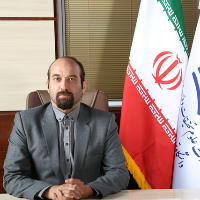Evaluation of levels of some trace metals in Crocus sativus L. and their transfer trend from soil to saffron by using neutron activation analysis
Author(s):
Article Type:
Research/Original Article (دارای رتبه معتبر)
Abstract:
In this research, concentrations of vanadium, chromium, manganese, cobalt, zinc, and arsenic were measured in saffron and saffron farm soil in two counties of Torbat Heydariyeh and Zaveh as two main centers of saffron production in the world using the neutron activation analysis method. The soil chromium and cobalt concentrations of all farms were found to be much higher than the WHO level and the values of vanadium, manganese, zinc, and arsenic were lower than the admissible level. The deficiency of essential elements for plant growth in the soil was not found. Two statistical analyses were used to evaluate the results of neutron activation analysis. The results of the paired t-test showed that the concentrations of vanadium, manganese, chromium, and cobalt were similar in different soil depths, which indicated distribution of these elements in the soil to be uniform. Also, only the zinc concentrations in the corm and its surrounding soil were statistically significant, which could indicate a strong movement of this element from soil to saffron. This test also showed that the distribution of the elements was uniform in the shoots. The correlation coefficients show that the uptake of cobalt and manganese by the saffron may decrease by increasing concentration of zinc in the soil. In addition, based on the contamination index and geo-accumulation, all soils in Torbat Heydarieh and Zaveh are extremely contaminated by chromium. In the adjacent areas in these two counties (south of Torbat Heydarieh and the west of Zaveh), and the central zone of Zaveh, the contamination levels of arsenic in the soil were found to be moderate and very high, respectively. Saffron crops were estimated uncontaminated in all farms, except in eastern Zaveh and south of Torbat Heydarieh that were contaminated by chrome. According to both indices of load and degree of contamination, the soil of all saffron farms were found to be highly contaminated. Soil contamination was evaluated to be extreme by the using both pollution load Index (PLI) and contamination degree (CD). In addition, saffron threads were found to be totally uncontaminated (except in the south of Torbat Heydarieh, where the crop was moderately polluted), according to PLI and CD.
Keywords:
Language:
Persian
Published:
Saffron Agronomy and Technology, Volume:8 Issue: 3, 2020
Pages:
377 to 397
magiran.com/p2170621
دانلود و مطالعه متن این مقاله با یکی از روشهای زیر امکان پذیر است:
اشتراک شخصی
با عضویت و پرداخت آنلاین حق اشتراک یکساله به مبلغ 1,390,000ريال میتوانید 70 عنوان مطلب دانلود کنید!
اشتراک سازمانی
به کتابخانه دانشگاه یا محل کار خود پیشنهاد کنید تا اشتراک سازمانی این پایگاه را برای دسترسی نامحدود همه کاربران به متن مطالب تهیه نمایند!
توجه!
- حق عضویت دریافتی صرف حمایت از نشریات عضو و نگهداری، تکمیل و توسعه مگیران میشود.
- پرداخت حق اشتراک و دانلود مقالات اجازه بازنشر آن در سایر رسانههای چاپی و دیجیتال را به کاربر نمیدهد.
In order to view content subscription is required
Personal subscription
Subscribe magiran.com for 70 € euros via PayPal and download 70 articles during a year.
Organization subscription
Please contact us to subscribe your university or library for unlimited access!


